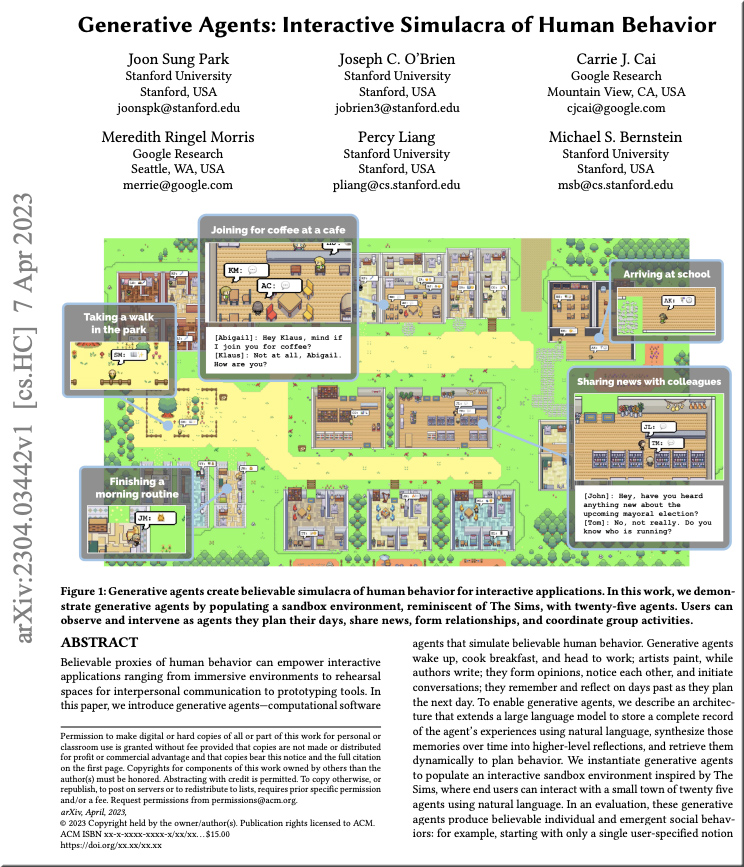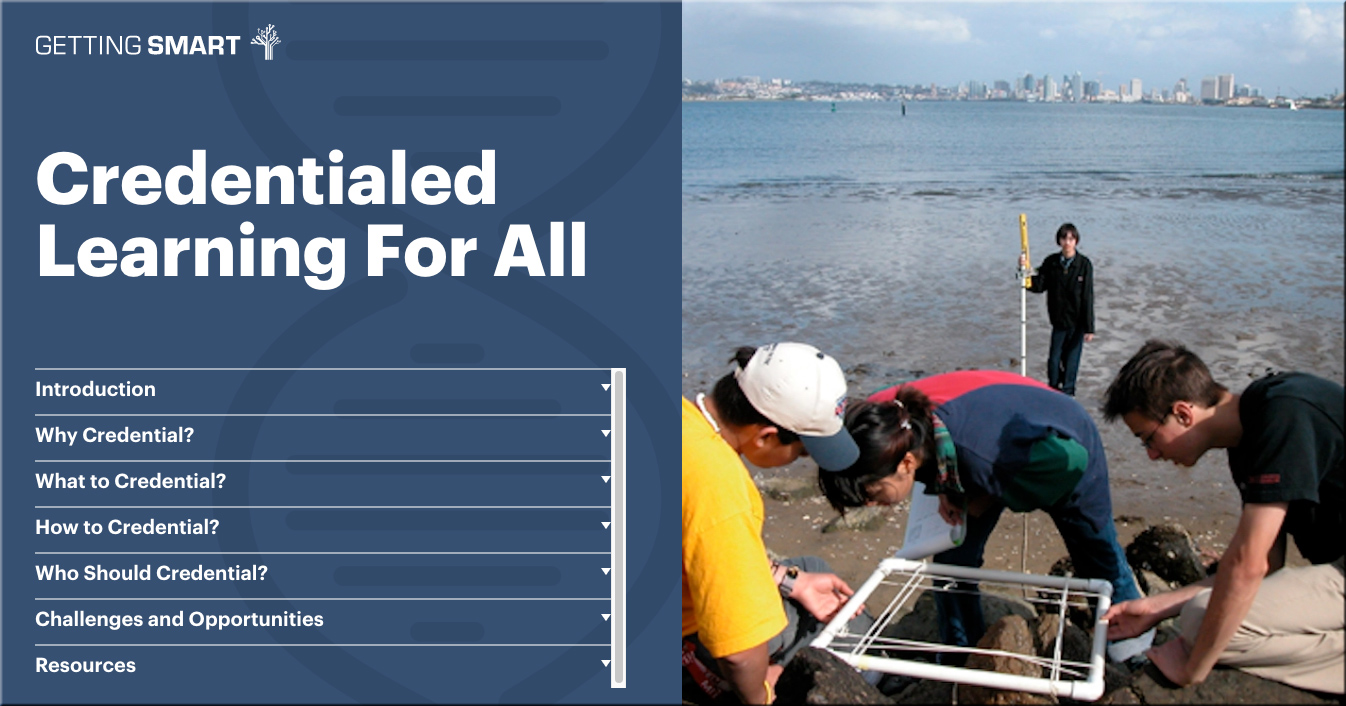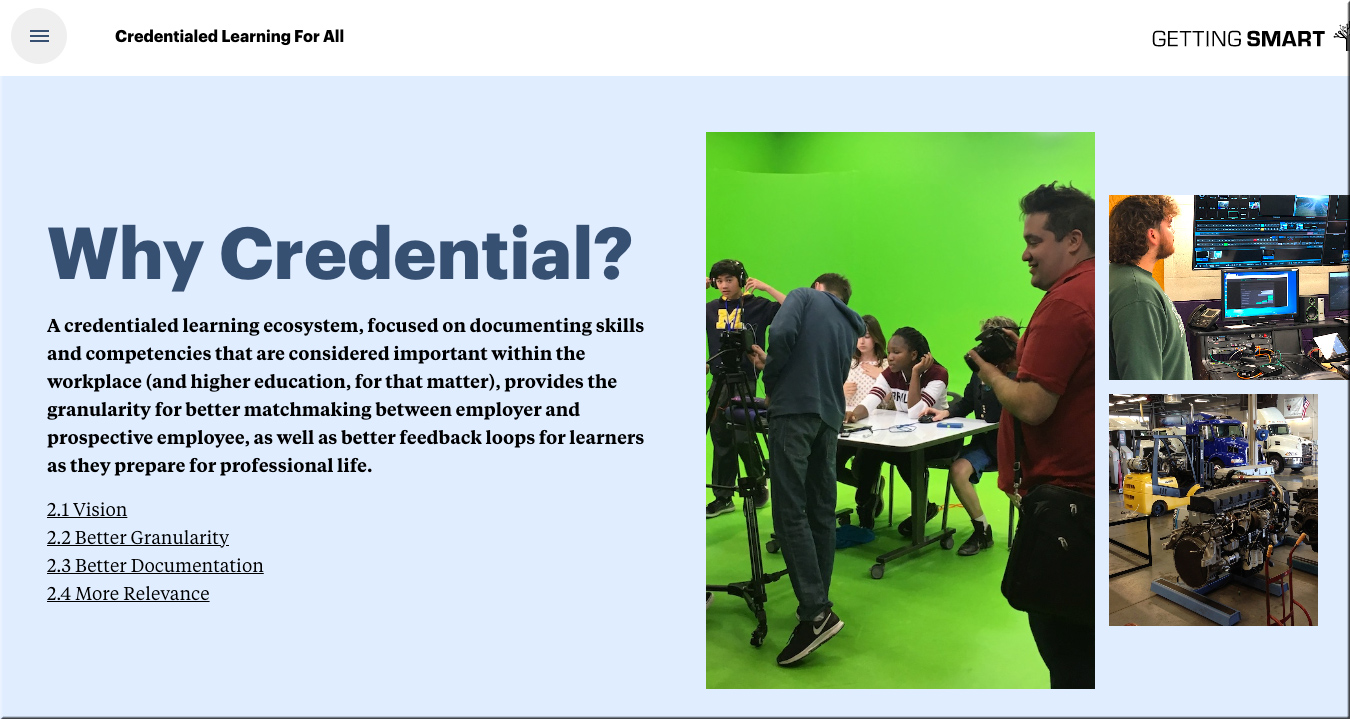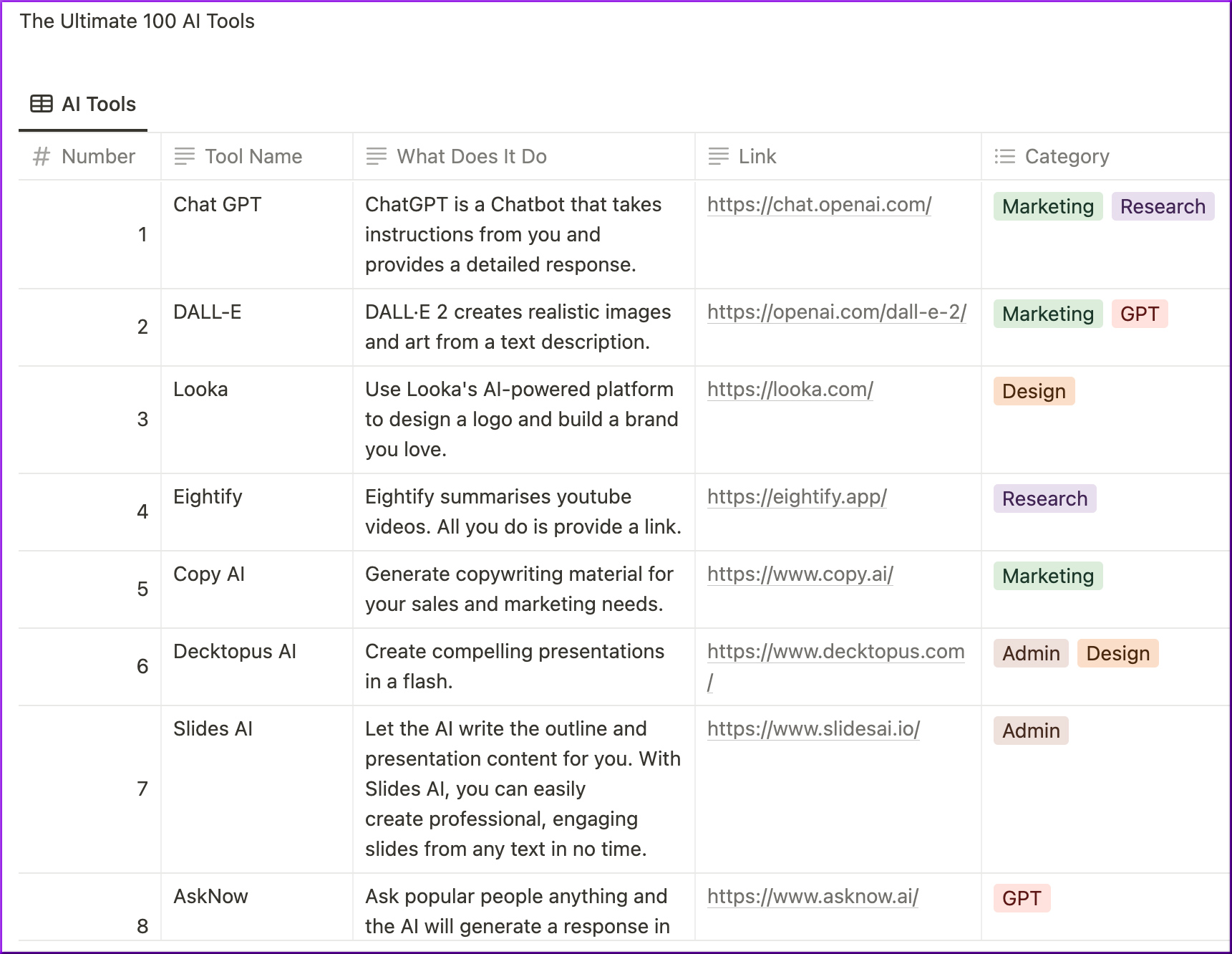‘Legal Tech Lists’: The 10 Most Significant Legal Tech Developments Since 2010 — from abovethelaw.com by Robert Ambrogi
Startups, AI, the cloud, and much more.
Excerpt:
Every year, I write a year-end wrap-up of the most significant developments in legal technology.
At the end of the past decade, I decided to look back on the most significant developments of the 2010s as a whole. It may well have been the most tumultuous decade ever in changing how legal services are delivered.
Here, I revisit those changes — and add a few post-2020 updates.
AI Tools for Lawyers: A Practical Guide is now “highly recommended” by @lsolum. It provides practical, & specific advice about how to use tools like ChatGPT to improve efficiency & effectiveness of various legal tasks. Download it now! https://t.co/gtbzB7Xvfg
— Daniel Schwarcz (@Dschwarcz) April 12, 2023
AutoGPT might be the next big step in AI.
Here’s why Karpathy recently said “AutoGPT is the next frontier of prompt engineering”
AutoGPT is the equivalent of giving GPT-based models a memory and a body. You can now give a task to an AI agent and have it autonomously come up… pic.twitter.com/mYIJm2IEZy
— Lior? (@AlphaSignalAI) April 11, 2023
AutoGPT, less noise more signal
This is where you should pay attention
Here is why ?
— Linus (???) (@LinusEkenstam) April 11, 2023
AutoGPT is the next BIG thing in AI.
Seems like a new *groundbreaking* update comes out every hour.
Here are a few examples just from the past 24 hours: ?
— Barsee ? (@heyBarsee) April 12, 2023
AutoGPT is the next big thing in AI— from therundown.ai by Rowan Cheung
Excerpt:
AutoGPT has been making waves on the internet recently, trending on both GitHub and Twitter. If you thought ChatGPT was crazy, AutoGPT is about to blow your mind.
AutoGPT creates AI “agents” that operate automatically on their own and complete tasks for you. In case you’ve missed our previous issues covering it, here’s a quick rundown:
-
- It’s open-sourced [code]
- It works by chaining together LLM “thoughts”
- It has internet access, long-term and short-term memory, access to popular websites, and file storage
.
From DSC:
I want to highlight that paper from Stanford, as I’ve seen it cited several times recently:.
- Generative Agents: Interactive Simulacra of Human Behavior
Joon Sung Park, Joseph C. O’Brien, Carrie J. Cai, Meredith Ringel Morris, Percy Liang, Michael S. Bernstein
.
From DSC:
And for a rather fun idea/application of these emerging technologies, see:
- Quick Prompt: Kitchen Design — from linusekenstam.substack.com by Linus Ekenstam
Midjourney Prompt. Create elegant kitchen photos using this starting prompt. Make it your own, experiment, add, remove and tinker to create new ideas.
…which made me wonder how we might use these techs in the development of new learning spaces (or in renovating current learning spaces).
From DSC:
On a much different — but still potential — note, also see:
A.I. could lead to a ‘nuclear-level catastrophe’ according to a third of researchers, a new Stanford report finds — from fortune.com by Tristan Bove
Excerpt:
Many experts in A.I. and computer science say the technology is likely a watershed moment for human society. But 36% don’t mean that as a positive, warning that decisions made by A.I. could lead to “nuclear-level catastrophe,” according to researchers surveyed in an annual report on the technology by Stanford University’s Institute for Human-Centered A.I., published earlier this month.
AutoGPTs are improving at a blazingly fast speed and could soon transform the face of business.
Here's what you need to know:
— Nathan Lands (@NathanLands) April 12, 2023
Credentialed Learning For All — from gettingsmart.com
Vision
Learning happens throughout life and is not isolated to the K-12 or higher education sectors. Yet, often, validations of learning only happen in these specific areas. The system of evaluation based on courses, grades, and credit serves as a poor proxy for communicating skills given the variation in course content, grade inflation, and inclusion of participation and extra credit within course grades.
Credentialed learning provides a way to accurately document human capability for all learners throughout their life. A lifetime credentialed learning ecosystem provides better granularity around learning, better documentation of the learning, and more relevance for both the credential recipient and reviewer. This improves the match between higher education and/or employment with the individual, while also providing a more clear and accurate lifetime learning pathway.
With a fully-credentialed system, individuals can own well-documented evidence of a lifetime of learning and choose what and when to share this data. This technology enables every learner to have more opportunities for finding the best career match without today’s existing barriers around cost, access, and proxies.
Addendum on 4/28/23 — speaking of credentials:
First Rung — from the-job.beehiiv.com by Paul Fain
New research shows stacking credentials pays off for low-income learners.
Stacking credentials pays off for many low-income students, new research finds, but only if learners move up the education ladder. Also, Kansas is hoping a new grant program will attract more companies to participate in microinternships.
The future of education in a world of AI — from oneusefulthing.org by Ethan Mollick
A positive vision for the transformation to come
Excerpt:
Imagine introducing high-quality AI tutors into the flipped classroom model. These AI-powered systems have the potential to significantly enhance the learning experience for students and make flipped classrooms even more effective. They provide personalized learning, where AI tutors can tailor instruction to each student’s unique needs while continually adjusting content based on performance. This means that students can engage with the content at home more effectively, ensuring they come to class better prepared and ready to dive into hands-on activities or discussions.
With AI tutors taking care of some of the content delivery outside of class, teachers can devote more time to fostering meaningful interactions with their students during class. They can also use insights from the AI tutors to identify areas where students might need extra support or guidance, enabling them to provide more personalized and effective instruction. And with AI assistance, they can design better active learning opportunities in class to make sure learnings stick.
Also relevant/see:
ChatGPT is going to change education, not destroy it — from technologyreview.com by Will Douglas Heaven
The narrative around cheating students doesn’t tell the whole story. Meet the teachers who think generative AI could actually make learning better.
Advanced chatbots could be used as powerful classroom aids that make lessons more interactive, teach students media literacy, generate personalized lesson plans, save teachers time on admin, and more.
Will ChatGPT Change How Professors Assess Learning? — from chronicle.com by Becky Supiano
It won’t be easy without their colleges’ support.
What the Past Can Teach Us About the Future of AI and Education — from campustechnology.com by Dr. David Wiley
Current attitudes toward generative AI hearken back to early skepticism about the impact of the internet on education. Both then and now, technology has created challenges but also opportunities that can’t be ignored.
How Easy Is It/Will It Be to Use AI to Design a Course? — from wallyboston.com by Wally Boston
Excerpt:
Last week I received a text message from a friend to check out a March 29th Campus Technology article about French AI startup, Nolej. Nolej (pronounced “Knowledge”) has developed an OpenAI-based instructional content generator for educators called NolejAI.
Access to NolejAI is through a browser. Users can upload video, audio, text documents, or a website url. NolejAI will generate an interactive micro-learning package which is a standalone digital lesson including content transcript, summaries, a glossary of terms, flashcards, and quizzes. All the lesson materials generated is based upon the uploaded materials.
From DSC:
I wonder if this will turn out to be the case:
I am sure it’s only a matter of time before NolejAI or another product becomes capable of generating a standard three credit hour college course. Whether that is six months or two years, it’s likely sooner than we think.
Also relevant/see:
From DSC:
Before we get to Scott Belsky’s article, here’s an interesting/related item from Tobi Lutke:
I just clued in how insane text2vid will get soon. As crazy as this sounds, we will be able to generate movies from just minor prompts and the path there is pretty clear.
— tobi lutke (@tobi) March 29, 2023
Our World Shaken, Not Stirred: Synthetic entertainment, hybrid social experiences, syncing ourselves with apps, and more. — from implications.com by Scott Belsky
Things will get weird. And exciting.
Excerpts:
Recent advances in technology will stir shake the pot of culture and our day-to-day experiences. Examples? A new era of synthetic entertainment will emerge, online social dynamics will become “hybrid experiences” where AI personas are equal players, and we will sync ourselves with applications as opposed to using applications.
A new era of synthetic entertainment will emerge as the world’s video archives – as well as actors’ bodies and voices – will be used to train models. Expect sequels made without actor participation, a new era of ai-outfitted creative economy participants, a deluge of imaginative media that would have been cost prohibitive, and copyright wars and legislation.
Unauthorized sequels, spin-offs, some amazing stuff, and a legal dumpster fire: Now lets shift beyond Hollywood to the fast-growing long tail of prosumer-made entertainment. This is where entirely new genres of entertainment will emerge including the unauthorized sequels and spinoffs that I expect we will start seeing.
Also relevant/see:
Digital storytelling with generative AI: notes on the appearance of #AICinema — from bryanalexander.org by Bryan Alexander
Excerpt:
This is how I viewed a fascinating article about the so-called #AICinema movement. Benj Edwards describes this nascent current and interviews one of its practitioners, Julie Wieland. It’s a great example of people creating small stories using tech – in this case, generative AI, specifically the image creator Midjourney.
Bryan links to:
Artists astound with AI-generated film stills from a parallel universe — from arstechnica.com by Benj Edwards
A Q&A with “synthographer” Julie Wieland on the #aicinema movement.
From DSC:
How will text-to-video impact the Learning and Development world? Teaching and learning? Those people communicating within communities of practice? Those creating presentations and/or offering webinars?
Hmmm…should be interesting!
The Future of Teaching is Here — from samchaltain.substack.com by Sam Chaltain
Excerpts (emphasis DSC):
It’s not sexy, but I feel like Sal Khan’s recent video introducing his Academy’s GPT-fueled AI tutor augurs the future of the teaching profession — and not just at Khan Academy.
…
The tutor is already fully capable of offering personalized feedback, hints and suggestions for just about any topic for which there are already clearly established answers — from solving math equations with parentheses to digesting John Locke’s political philosophy.
…
But now we’ve entered a new chapter — dare I say, a Technological Singularity (20 years early) — one in which Chat-GPT in particular, and the daily flood of AI tools more generally, has changed the nature of the teacher/student relationship even more irrevocably than before.
As a result, from this day forward, the job of a teacher REALLY needs to stop being about transmission.
So what should it start being instead?
…
In which case, the future of teaching is not about transmission, but it is about the other trans- words: transmedia exploration, transdisciplinary weaving, transcultural understanding, and, yes, personal and societal transformation.
Why some college professors are adopting ChatGPT AI as quickly as students — from cnbc.com by Carolyn Chun
Key Points:
- A recent analysis by researchers at NYU, Princeton and the Wharton School finds that many of the jobs that will be most “exposed” to generative AI such as ChatGPT are in the college teaching profession.
- One of the first narratives to emerge from the sudden explosion in usage of ChatGPT is the risk of students cheating on writing assignments.
- But use by college teachers is growing quickly too, and adoption by educators may be critical to making the case that AI will augment the jobs humans are doing rather than replace them.
Also relevant/see:
Tools like ChatGPT will revolutionize the work of lawyers. Lawyers & law students must therefore learn how to use these tools now. Here is a practical guide on how to do so: https://t.co/gtbzB7Xvfg
Here are a few new key pieces of advice we elaborate on in the piece:
— Daniel Schwarcz (@Dschwarcz) April 2, 2023
Also relevant/see:
Having spent my career training lawyers, I’m convinced of AI’s transformative power for law – AI can perform core elements of legal reasoning: breaking down cases, applying rules to facts, arguing in alternative, analogizing. Lawyers need to get comfortable with this tech ASAP! https://t.co/VFIwbpTzFd
— Daniel Schwarcz (@Dschwarcz) April 3, 2023
Also relevant/see:
Learning Designers will have to adapt or die. 10 ways to UPSKILL to AI…. — from donaldclarkplanb.blogspot.com by Donald Clark
From Ethan Mollick on LinkedIn:
Take a look at this simulated negotiation, with grading and feedback. Prompt: “I want to do deliberate practice about how to conduct negotiations. You will be my negotiation teacher. You will simulate a detailed scenario in which I have to engage in a negotiation. You will fill the role of one party, I will fill the role of the other. You will ask for my response to in each step of the scenario and wait until you receive it. After getting my response, you will give me details of what the other party does and says. You will grade my response and give me detailed feedback about what to do better using the science of negotiation. You will give me a harder scenario if I do well, and an easier one if I fail.”
Samples from Bing Creative mode and ChatGPT-4 (3.5, the free version, does not work as well)
I’m having a blast with ChatGPT – it’s testing ME! — from by Mark Mrohs
Using ChatGPT as an agent for asynchronous active learning
I have been experimenting with possible ways to incorporate interactions with ChatGPT into instruction. And I’m blown away. I want to show you some of what I’ve come up with.
Canva’s New AI Wonder Tools — from wondertools.substack.com by Jeremy Caplan
A magic eraser, a branding kit, AI presentations, and more new features
Excerpt:
Canva launched a bunch of new features at a live event viewed by 1.5 million people globally. The Australian company is no longer an upstart. 125 million people use it monthly, including 13 million paid subscribers yielding $1.4 billion in revenue. Canva’s increasingly competing with Adobe to help people create eye-catching visuals. Here are its most useful new tricks.
How to use AI to do practical stuff: A new guide — from oneusefulthing.substack.com by Ethan Mollick
People often ask me how to use AI. Here’s an overview with lots of links.
Excerpts:
We live in an era of practical AI, but many people haven’t yet experienced it, or, if they have, they might have wondered what the big deal is. Thus, this guide. It is a modified version of one I put out for my students earlier in the year, but a lot has changed. It is an overview of ways to get AI to do practical things.
…
I want to try to show you some of why AI is powerful, in ways both exciting and anxiety-producing.
Also see Ethan’s posting:
Power and Weirdness: How to Use Bing AI
Bing AI is a huge leap over ChatGPT, but you have to learn its quirks
















